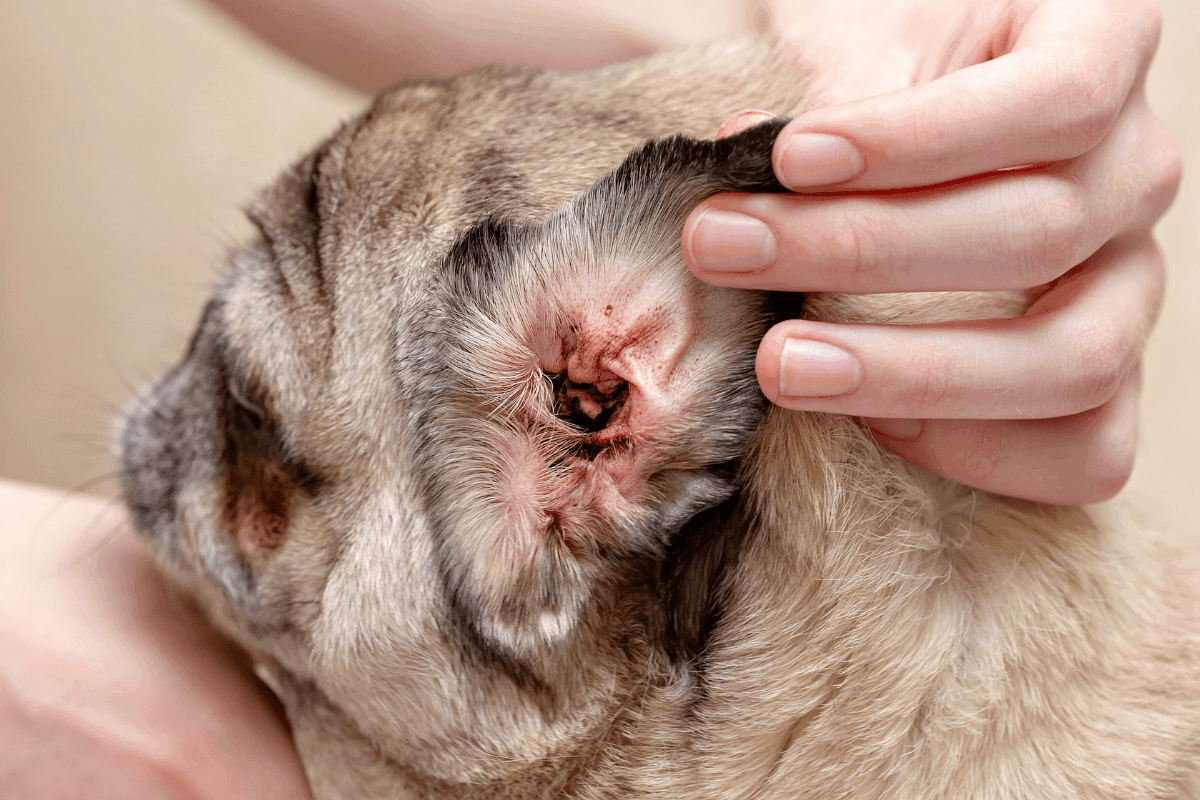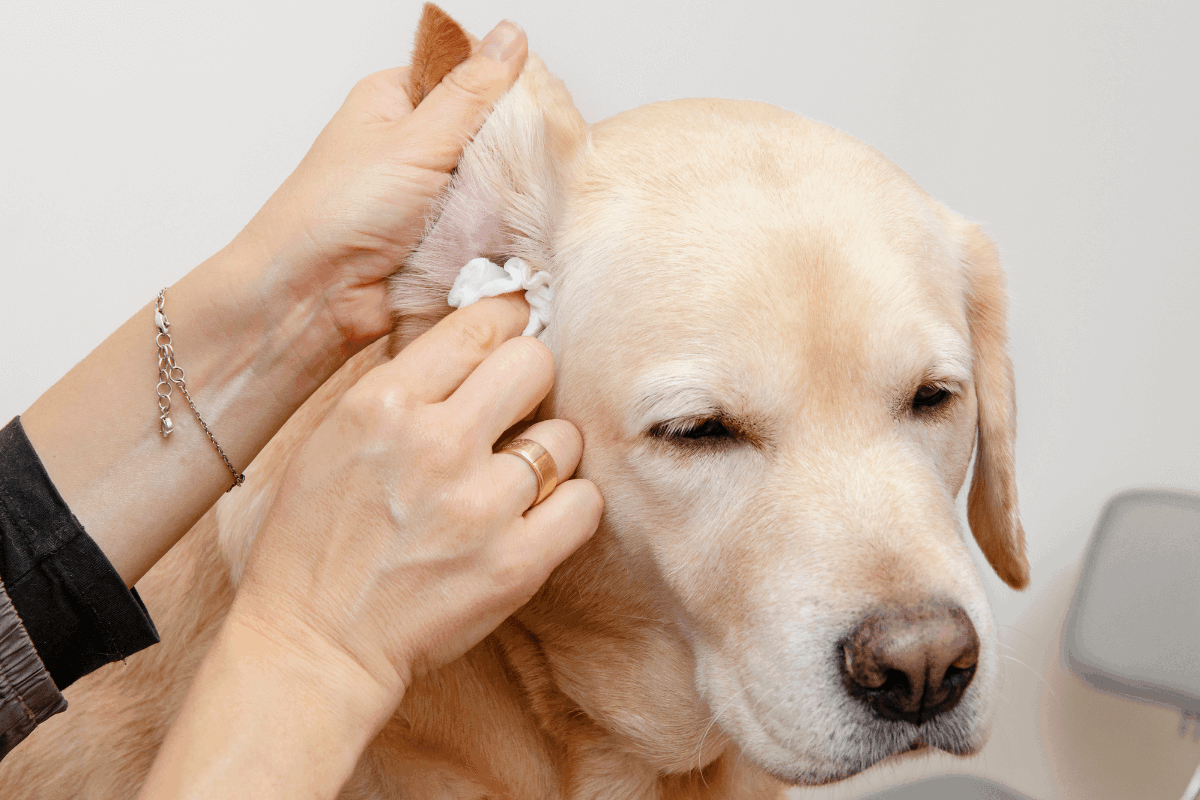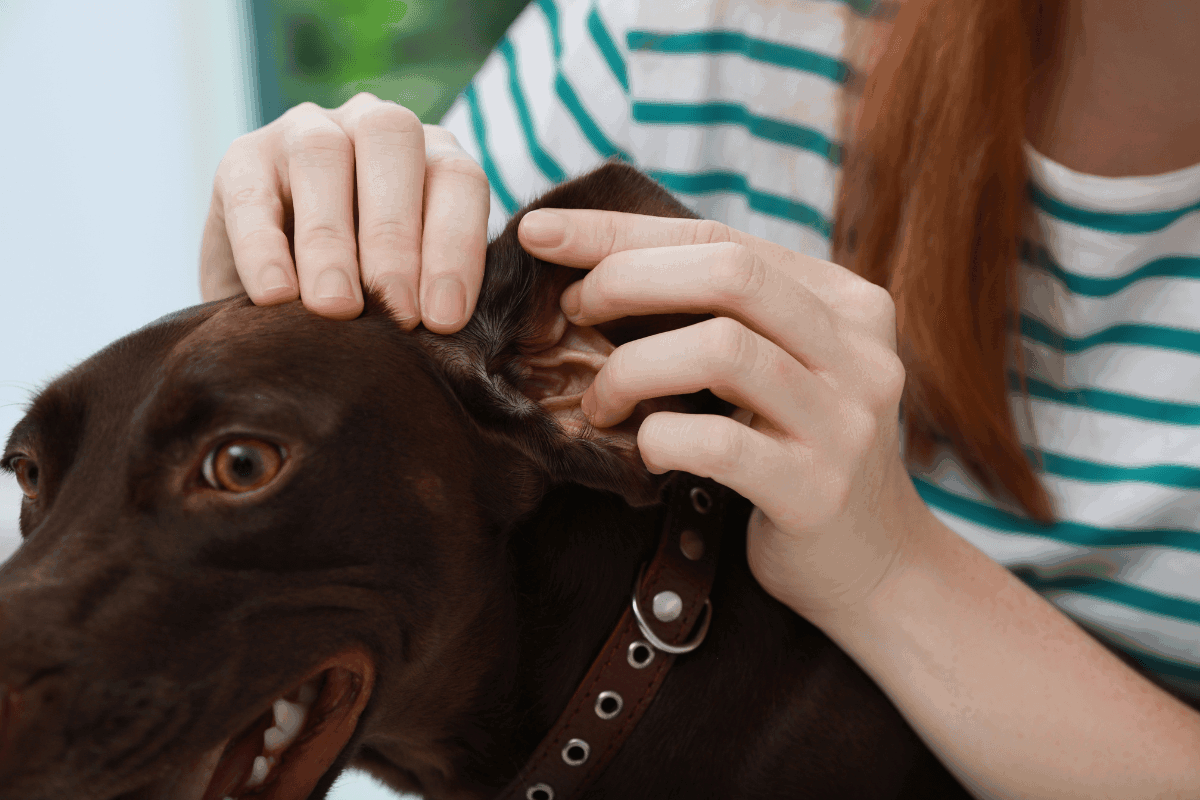How to Clean a Dog's Ears: 7 Easy Tips & Tricks
Essential Tips to Ensure Your Dog’s Ears Stay Clean and Infection Free
As a dog owner, taking care of your dog’s ears is an important part of their grooming routine. Ear Cleaning not only helps prevent discomfort but also reduces the risk of infections. Whether you're wondering how to clean a dog's ears at home or just looking for tips on maintaining your dog’s ear health, this guide will walk you through the process. We'll cover everything from how often to clean your dog's ears, what to use, what to look out for and when to seek professional help.
1. Know the Signs of Dirty Ears
Before diving into the cleaning process, it's important to understand when your dog's ears need attention. Keep an eye out for these common signs:
- Wax build-up: Waxy dog ears are common, especially in certain breeds. If you notice brown, yellow, or dark wax in the ear canal, it's time to clean.
- Bad odour: Foul-smelling ears can indicate a build-up of bacteria or yeast. This is often a sign of an infection.
- Excessive scratching: Dogs will often scratch at their ears if they're irritated or inflamed.
- Redness or swelling: Infected or inflamed ears will often appear red or swollen.
- Discharge: Thick, gooey discharge is another sign that something might be wrong.

If you notice any of these symptoms, it may be time to clean your dog’s ears. However, if you're worried that your dog has an ear infection or if the symptoms persist, please seek professional veterinary help to get a proper diagnosis and treatment.
2. Get Your Supplies
You don't need to spend a fortune on ear-cleaning supplies, but you do need the right tools. Here's what you'll need:
- Ear cleaning solution: Look for a canine ear flush or ear cleaner that is safe for dogs. Do not use products meant for humans as they could irritate your dog’s ears.
- Damp cotton wool or pads: These are gentle on your dog’s ears and help remove debris without causing damage.
- Towels: You’ll want a towel handy to wipe up any excess fluid or wax.
- Treats: Reward your dog after the cleaning session to create a positive association with ear care!
3. How to Clean a Dog’s Ears at Home
Now that you have your supplies, here’s how to clean your dog’s ears effectively:
- Prepare the ear cleaner: Hold the ear cleaning solution in your hand too warm it slightly (cold solutions can be uncomfortable).
- Gently lift the ear flap: Hold your dog’s ear flap up to expose the ear canal.
- Apply the cleaner: Squeeze a small amount of ear cleaning solution into the ear canal. Don’t overfill it—just enough to moisten the canal.
- Massage the base of the ear: Gently massage the ear at the base for 20-30 seconds. This helps break up any wax or debris inside the canal.
- Let your dog shake: Dogs often shake their heads instinctively after their ears are cleaned. This helps to loosen any debris inside the ear.
- Gently wipe the ear: Use a cotton ball or soft cloth to wipe away excess wax, dirt, and the cleaning solution from the outer ear canal.
- Repeat if necessary: If the ear still looks dirty, repeat the process until the cotton ball comes out clean.

4. How Often Do You Clean Dog's Ears?
The frequency of cleaning depends on your dog’s breed, activity level, and ear health. As a general guideline:
- For dogs with floppy ears (e.g., Cocker Spaniels, Basset Hounds, Poodles): Clean their ears weekly to prevent moisture build-up and wax accumulation.
- For dogs with upright ears (e.g., German Shepherds, Huskies): Cleaning once a month may be sufficient.
- Active or swimming dogs: Dogs that swim often or spend a lot of time outside may need more frequent ear cleaning to avoid infections.
Always check your dog’s ears regularly, even if you're not cleaning them every week, to ensure there’s no build-up or signs of irritation.
5. What to Avoid When Cleaning Dog Ears
While cleaning your dog's ears is essential, over cleaning can be a problem and it's just as important to avoid certain mistakes:
- Never insert anything into the ear canal: Avoid using cotton buds, as they can push debris further into the ear canal or damage the eardrum.
- Be gentle: The ear canal is delicate. If your dog seems in pain or resists too much, stop and try again later or consult a vet.
- Don't use harsh chemicals: Always choose an ear cleaner designed specifically for dogs to avoid irritation.
6. Ear Treatment for Dogs: What to Look for in an Infection
Even with regular cleaning, some dogs are more prone to ear infections. Here's what to look for:
- Redness or swelling inside the ear canal.
- Itching or pawing at the ears frequently.
- Excessive wax production or unusual discharge.
- Pain or sensitivity when touching the ear.
If your dog shows any of these signs, it’s important to consult with a vet. Your vet may recommend a medicated ear treatment for dogs, which is typically a combination of antibiotics or antifungals to clear up the infection. A canine ear flush can also be prescribed to clean out the infection thoroughly. If you suspect an ear infection, don’t wait—seek professional veterinary care to prevent complications.
7. Side Note: Plucking Ears for Certain Breeds
Certain breeds, like Shih Tzus, Cockerpoos, Maltese, and any other dogs that don’t shed and need their ears plucked to maintain healthy ear canals. Plucking removes excess hair that can trap moisture and debris, reducing the risk of ear infections. However, this should always be done by a professional groomer or vet, as improper plucking or ear handling can cause pain or injury to your dog.

